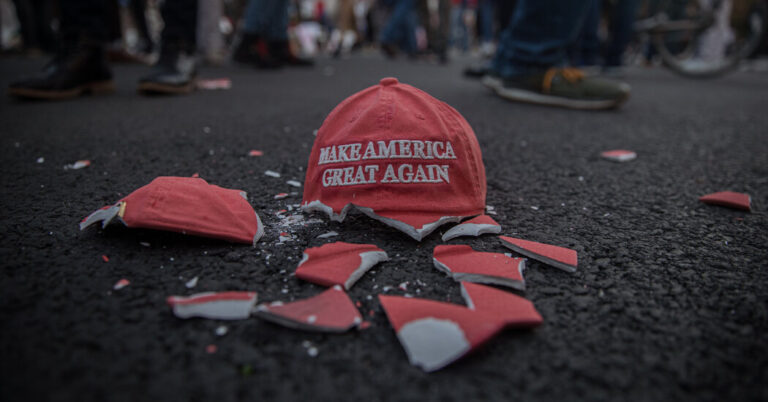Opinion | Donald Trump and the Romance of Regime Change
The Jaffa school offered an interpretation of American history that might be described as Inception, Consummation and Corruption. Its Great Consummator was Lincoln, who restored the promise of the founding by fully establishing the “all men are created equal” absolutism of the Declaration of Independence. Its villains were John C. Calhoun and the progressives of the early 20th century, the former for defending slavery and inequality, the latter for replacing a constitutional republic with a bureaucratized administrative state, and both for displaying a philosophical and moral relativism that Jaffa despised (and that, as his intellectual feuds multiplied, he claimed to discern in many of his fellow conservatives as well).
But one thing you noticed hanging around with Claremont folks was that while they were obviously interested in the good and bad of each American regime change, from the original founding (great) to the Lincolnian re-founding (even better) to the progressive re-foundings of Woodrow Wilson (their great villain, the “Lost Cause” sympathizer turned arrogant technocrat) and Franklin Roosevelt, they were also just really interested in the idea of founding itself, when moments of crisis bring new orders out of old ones.
At one point, as a break from reading founding-era texts, we were treated to a screening of “The Man Who Shot Liberty Valance,” the great John Ford western whose theme is the Old West’s transition into political modernity, passing from the rule of the gun (embodied by John Wayne’s Tom Doniphon) to the rule of the lawbook (embodied by Jimmy Stewart’s Ransom Stoddard).
In the movie, the transition can’t happen without a dose of chaos, a mixture of violence and deception. Lee Marvin’s outlaw, Valance, challenges the peaceable lawyer Stoddard to a duel; Doniphon saves the lawyer by shooting the outlaw from the shadows — and then the killing is mistakenly attributed to Stewart’s character, who is lionized for it and goes on to be a great statesman of the New West while the cowboy and his vigilante code recede.
The not-so-subtle implication of the Claremont reading of American history is that this kind of fraught transition doesn’t happen once and for all; rather, it happens periodically within the life of any nation or society. Whenever change or crisis overwhelms one political order, one version of (in our case) the American republic, you get a period of instability and rough power politics, until the new era or the new settlement is forged.
But it doesn’t happen without moments like Doniphon shooting Valance — or Lincoln suspending habeas corpus, say, or Roosevelt threatening to pack the Supreme Court — when norms and niceties need to be suspended for the sake of the new system that’s waiting to be born.
When I try to understand what Eastman imagined himself doing in serving Donald Trump even unto constitutional crisis, this is where my speculations turn. I don’t think this is the necessary implication of Claremont thought; indeed, you can find in the latest issue of The Claremont Review of Books an essay by William Voegeli critiquing conservatives who seem “enthused about chaos” and overeager to re-found rather than conserve. But I think it’s an understandable place for the Claremont reading of American history to turn at a time when the American republic does appear sclerotic, stalemated, gridlocked and in need of some kind of conspicuous renewal.
Check out our Latest News and Follow us at Facebook
Original Source







